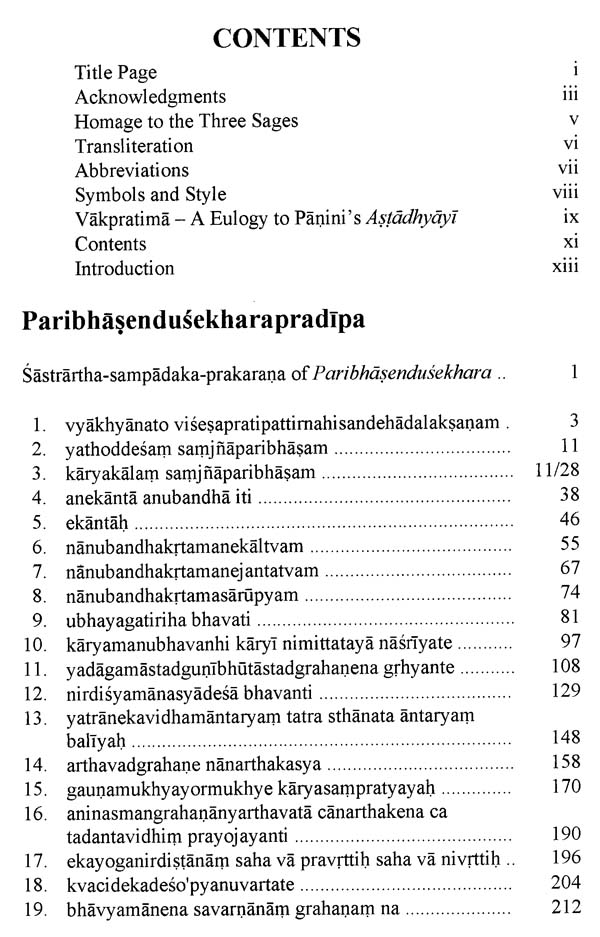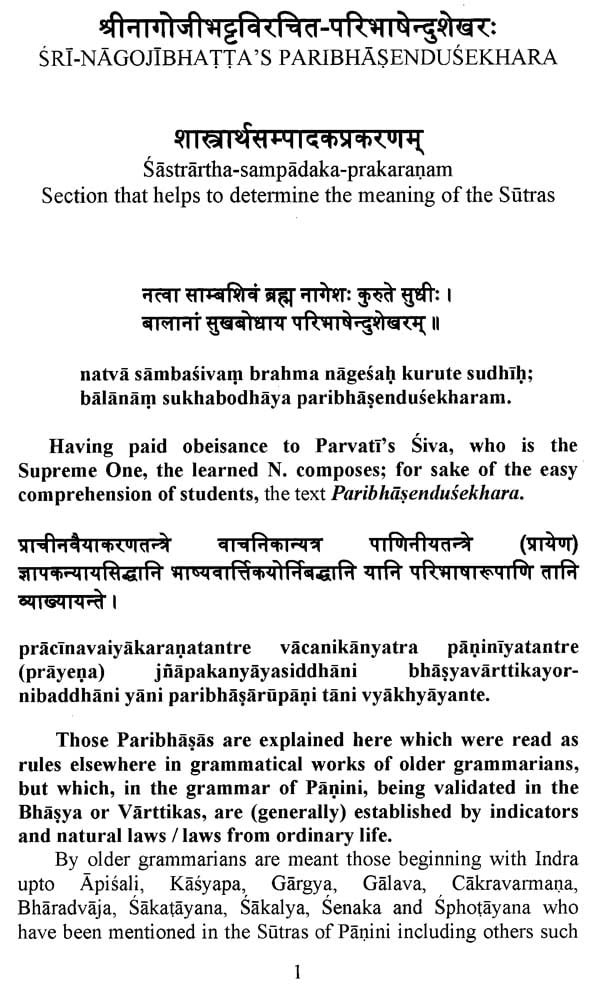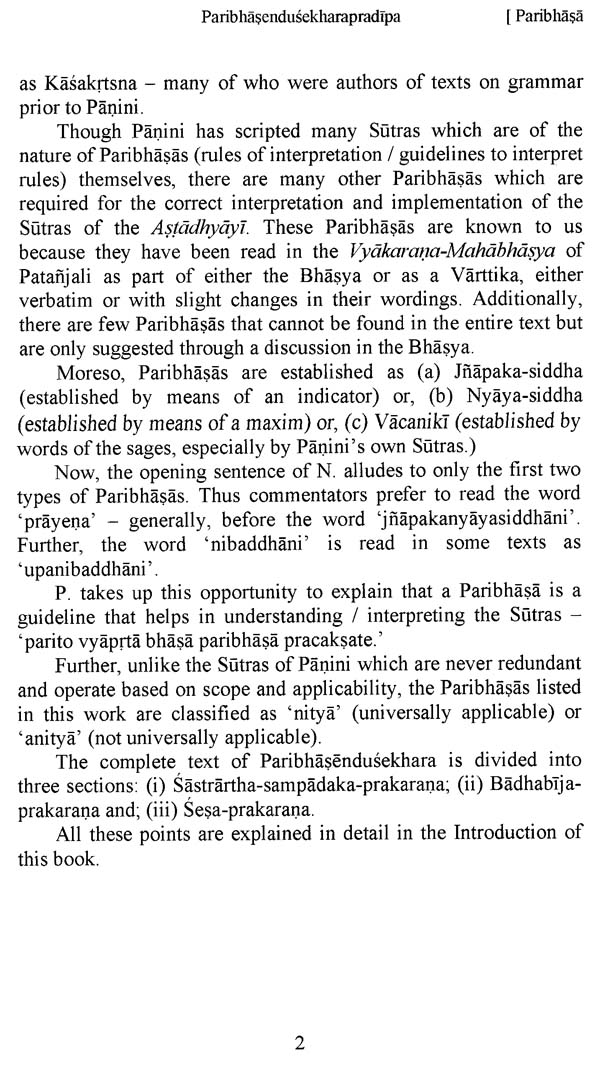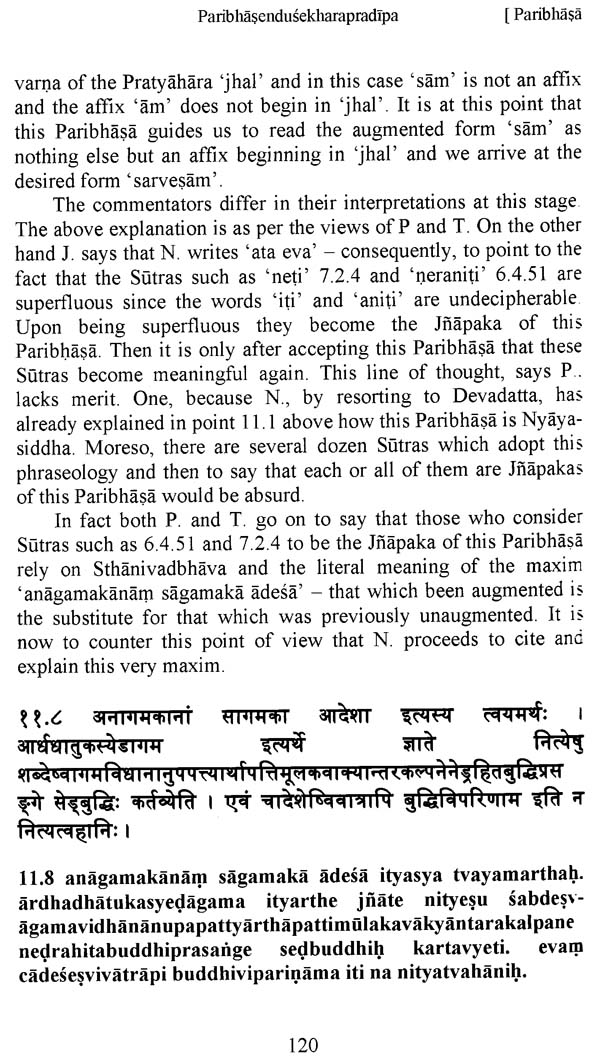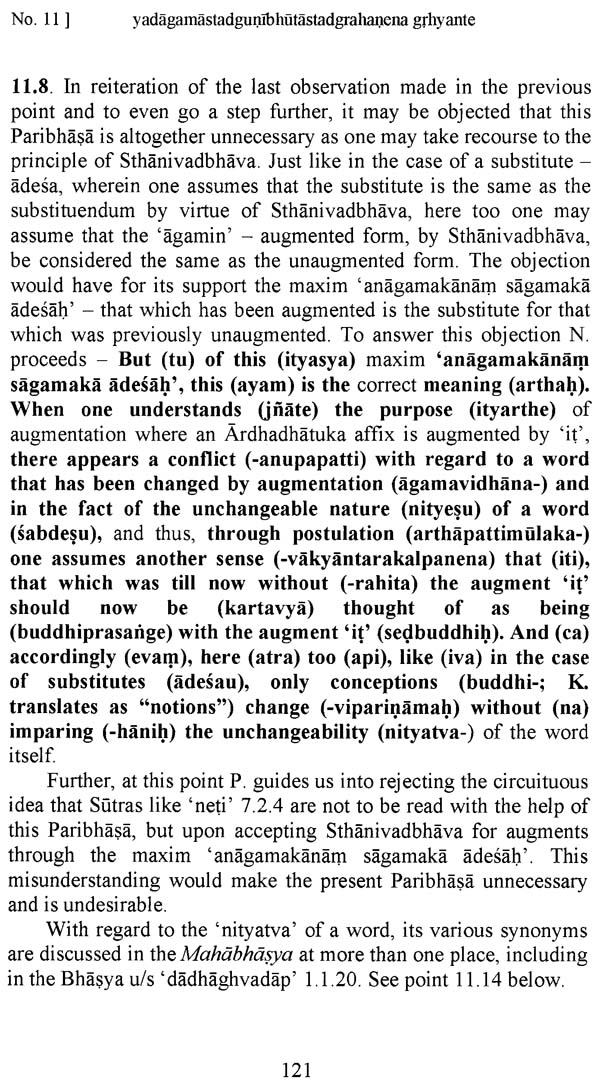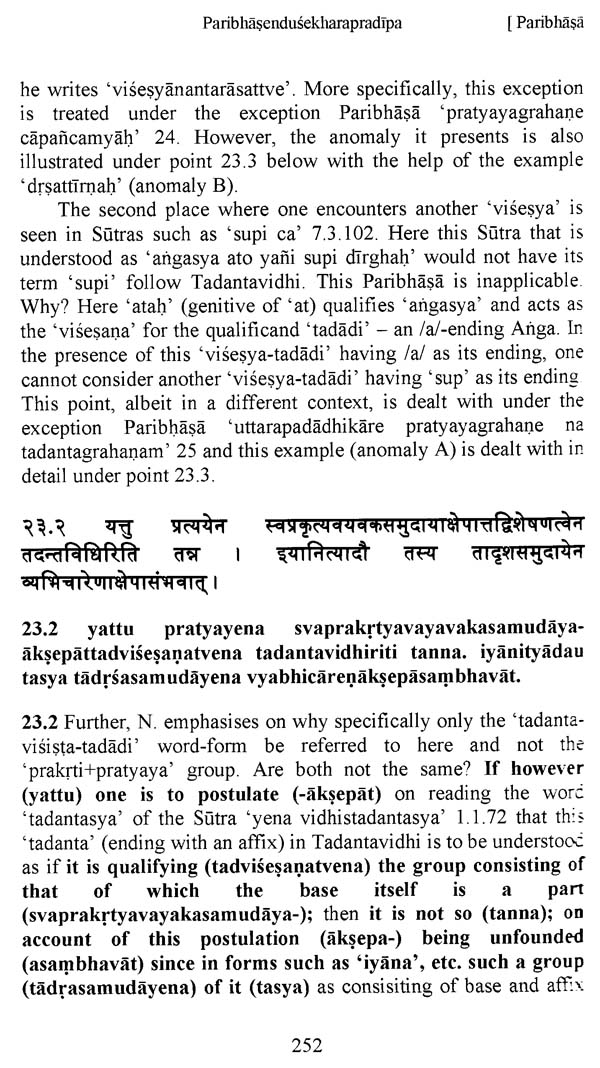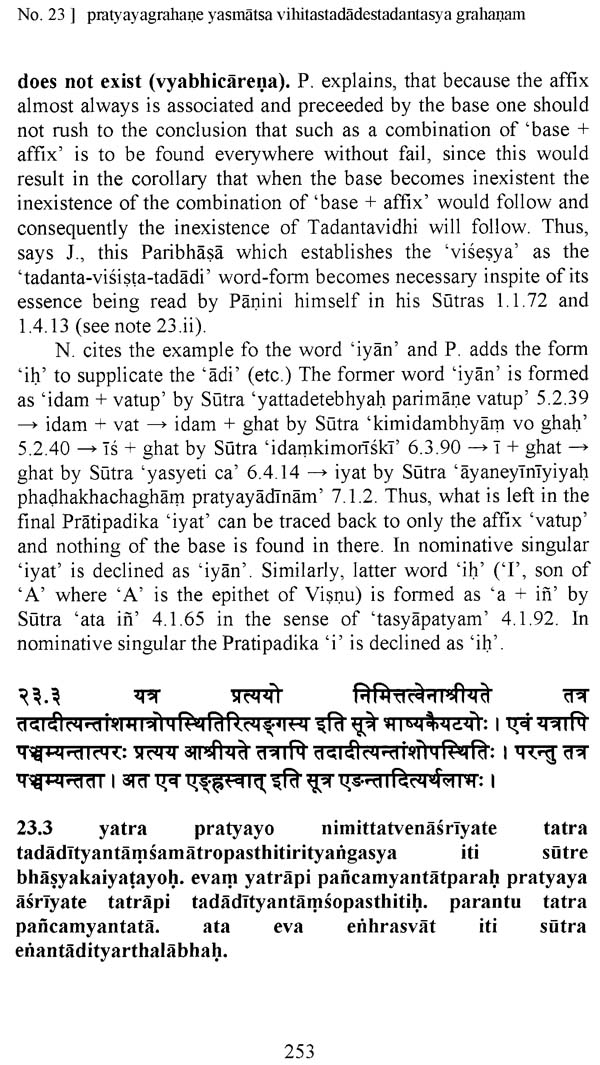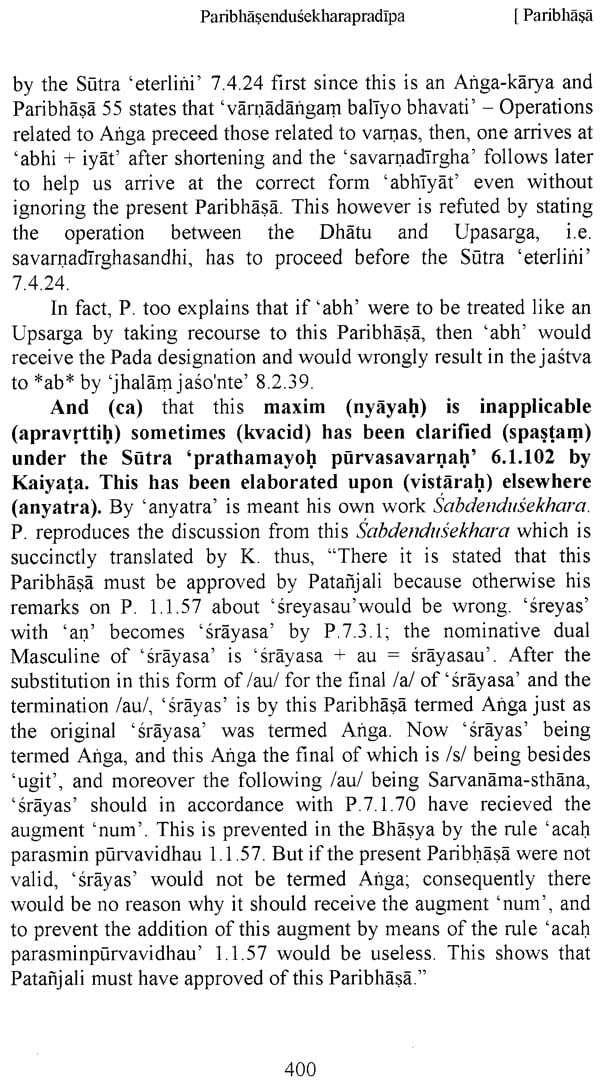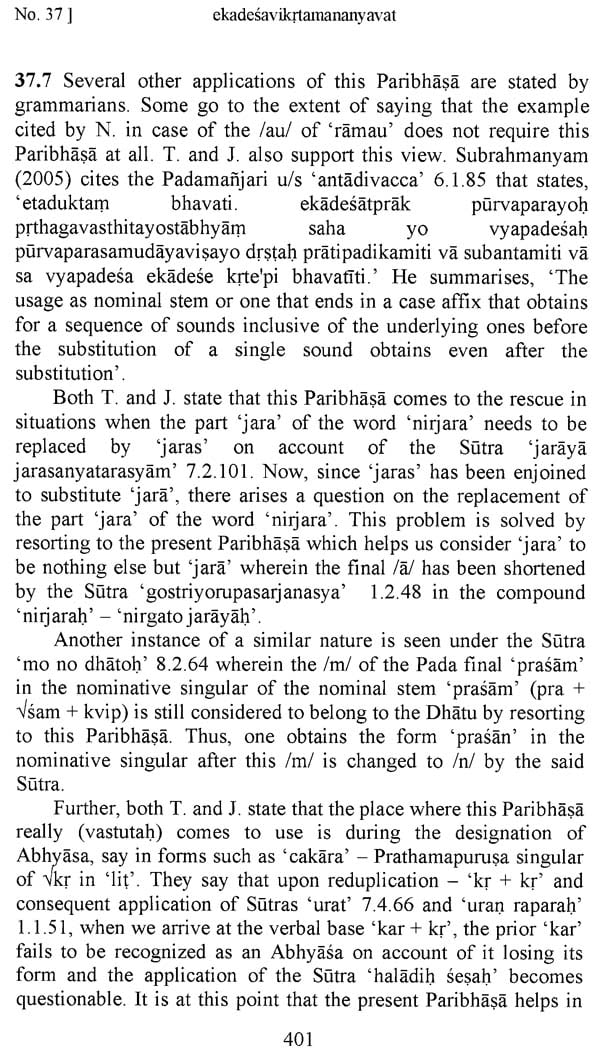
Paribhasendusekharapradipa
Book Specification
| Item Code: | NAY945 |
| Author: | Rishit Desai |
| Publisher: | Kavi Kulaguru Kalidas Sanskrit University |
| Language: | SANSKRIT TEXT WITH ENGLISH TRANSLATION |
| Edition: | 2020 |
| ISBN: | 9789385710759 |
| Pages: | 409 |
| Cover: | PAPERBACK |
| Other Details | 9.00 X 6.00 inch |
| Weight | 840 gm |
Book Description
The word Paribhasa, though translated as "metarule" and understood as an interpretational guideline, has been explained variously by different grammarians. These varying explanations may be considered to belong to two categories; namely, (i) those which explain the function through the term and, (ii) those which explain the term through its function.
The following are few of the explanations of the term Paribhasa wherein its function is understood by analysing the term itself. Abhyankar in his Dictionary of Sanskrit Grammar explains Paribhasa to mean `parito bhasyate ya sa paribhasa. prakirtita' (That which is applicable throughout may be called a Paribhasa.) In the introduction to the Paribhasa-samgraha he says 'bhasyante parito yasmat paribhasastatah smrtah' (From which other rules become meaningful may be known as Paribhasas.) Vaidyanatha Payagunda speaks of Paribhasa on similar lines when he says, `parito vyaprtam bhasam paribhasam pracaksate' (A statement that is valid all over is called a Paribhasa.) Haradatta in his Padamanjari is more meticulous when he explains Paribhasa as `paritah sarvatra purvatra paratra vyavahite cananatare ca bhasyate karyamanaya. sa paribhasa' (A Paribhasa is that by which an operation may be performed such that it is read all around, everywhere, before and later, upon consideration of the exceptional nature and immediacy of rules.) In all these explanations recourse is taken to the verbal prefix 'pari' and the verbal root 'bhas'. These explanations do indeed throw light on the Paribhasas of Panini, that is, on those Paribhasa which have been included as Sutras in the Astadhyayi.
Mini has composed approximately 50 Paribhasa-sutras that pervade throughout the Astadhyayi and are made applicable by the context or sign (linga) present in the rules of operations.
Further, certain Paribhasa.-sutras such as `acasca' 1.2.28, sthanivadadeso'nalvidhau' 1.1.56, etc. define the scope of operations. Thus, while the former helps to restrict operations relating to `hrasva', dirgha' and `pluta' to vowels, the latter helps to extend operations enjoined for the substituenda to the substitutes. Similarly, the sutra samarthah padavidhih' 2.1.1 establish the scope of words that may undergo operations of compounding. Further, some Paribhasa-sutras such as `vipratisedhe param karyam' 1.4.2, asiddhavadatrabhat' 6.4.22, purvatrasiddham' 8.2.1, etc. help us ascertain strength and order of application of Sutras.
However, neither are Paribhasas restricted to just this set of Sutras nor are the above explanations of the term Paribhasa comprehensive enough to understand the function of all Paribhasas - those that are listed as Sutras and those that are not. There remain many other Paribhasas that are accepted by grammarians within the fold of the Astadhyayi, that is, as necessary for the correct interpretation of the Sutras in the Astadhytiyi (laksana) as well as for the correct formation of the words (laksya). The function of such Paribhasas is explained by various grammarians as `aniyame niyamakarini paribhasa' (A statement that makes a rule adequate, when it is otherwise not). Durgasimha, on similar lines, states, `vidhau niyamakarini Paribhasa
Book's Contents and Sample Pages
